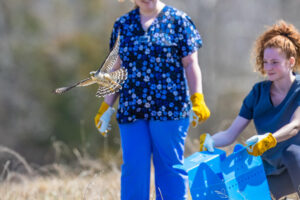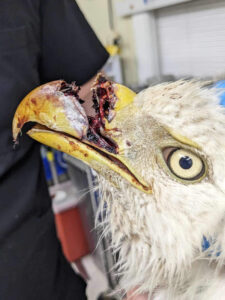
News
Critical Care Patient Back in the Wild!
This week, the World Bird Sanctuary released its first American Kestrel patient of the year after over two months of rehabilitation. Discovered in critical condition beneath her nest, she was suffering from hypothermia, respiratory distress, and a severely fractured toe with an open wound. The injury was so severe that part of the toe fell off on her first day with us. After stabilizing her with heat and oxygen support for a few days, further amputation was required to remove dead bone and close the wound.
After completing her antibiotic treatment for the toe wound, she joined Lee, our Kestrel foster mother, until she was ready for release into the wild. Despite her missing toe, she excelled in live prey tests, outperforming the other three kestrels.
The American Kestrel (Falco sparverius) is North America’s smallest falcon. Don’t be fooled, however, as these beautiful raptors are well known for their incredible hunting prowess. American Kestrels thrive in a variety of habitats, where they perch on telephone wires and fence posts in search of prey. Their diet primarily consists of insects, small mammals, and birds, which they hunt using their sharp talons, swift aerial dives, and even the famous Kestrel hover. During the breeding season, kestrels nest in cavities found in trees, often repurposing old woodpecker holes, or on cliffs.
Despite their adaptability, American Kestrel populations have been steadily declining due to habitat destruction and the widespread use of pesticides, making conservation efforts like those at the World Bird Sanctuary crucial for their survival.
Patient #24-204 marks the fourteenth successful release this week! Your generous support continues to grant birds like #24-204 the opportunity to soar freely once more!
Tags :
WBS
Categories
Latest News

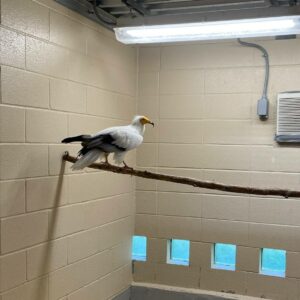
World Bird Sanctuary Sends Endangered Vultures to Africa
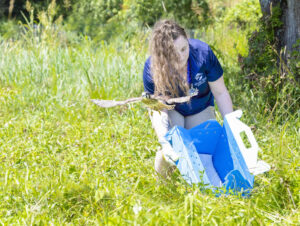
Critical Care Patient Back in the Wild!
